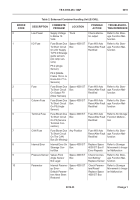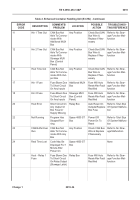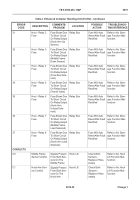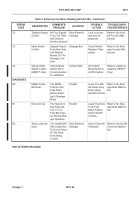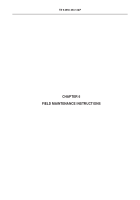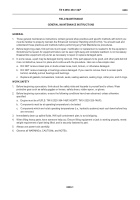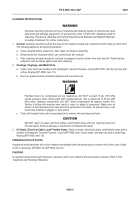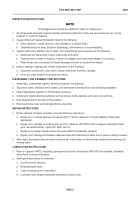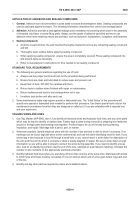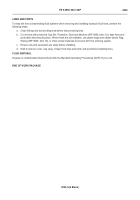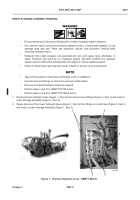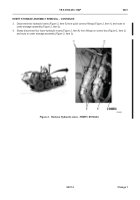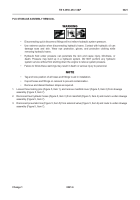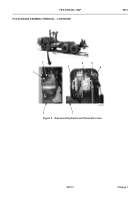TB-9-3950-253-13-P
PALLETIZED LOAD SYSTEM TRUCK, M1075 and M1075A1 (PLS) AND HEAVY EXPANDED MOBILITY TACTICAL TRUCK, M1120, M1120A2, AND M1120A4 (HEMTT), ENHANCED CONTAINER HANDLING UNIT (E-CHU)
TECHNICAL BULLETIN; OPERATOR AND FIELD MAINTENANCE, INSTALLATION INSTRUCTIONS, AND REPAIR PARTS AND SPECIAL TOOLS LIST
JULY 2009
TB-9-3950-253-13-P - Page 222 of 704
0020-4
TB 9-3950-253-13&P
0020
APPLICATION OF ADHESIVES AND SEALING COMPOUNDS
00020
1.
General.
Adhesives are recommended in some tasks to ensure and strengthen seals. Sealing compounds are
used to seal parts against moisture. The following information describes their correct use and application.
2.
Adhesive.
Adhesive provides a seal against leakage and a resistance to loosening when used in the assembly
of threaded, slip-fitted, or press-fitting parts. Always use the grade of adhesive specified and never use
adhesive when other retaining means are provided, such as lockwires, lockwashers, lockplates, and fasteners.
3.
Sealing Compound.
a. Anytime a seal is broken, the part must be thoroughly cleaned to remove any remaining sealing compound
and dirt.
b. Thoroughly clean surface before applying sealing compound.
c.
When applying sealing compound, ensure the area is completely covered. Press sealing compound into
and around parts as necessary.
d. Refer to manufacturer’s instructions for time needed to set sealing compound.
STANDARD TOOL REQUIREMENTS
00020
1. The following are general practices regarding the use of tools:
a. Always use the proper tool kit and tools for the procedure being performed.
b. Ensure tools are clean and lubricated to reduce wear and prevent rust.
c.
Keep track of tools. DO NOT be careless with them.
d. Return tools to toolbox when finished with repair or maintenance.
e. Return toolboxes and tools to tool storage when not in use.
f.
Inventory tools before and after each use.
2. Some maintenance tasks may require special or fabricated tools. The “Initial Setup” of the procedure will
specify any special or fabricated tools needed to perform that procedure. Use these special tools only for the
maintenance procedures for which they are designed or called out. If you are unfamiliar with a required tool,
see your supervisor.
TAGGING WIRES AND LINES
00020
1. Use Tag, Marker (WP 0060, Item 12) to identify all electrical wires and hydraulic fluid lines, and any other parts
which may be hard to identify or replace later. Fasten tags to parts during removal by wrapping wire fasteners
around or through parts and twisting ends together. Position tags to be out of the way during cleaning,
inspection, and repair. Mark tags with a pencil, pen, or marker.
2. Whenever possible, identify electrical wires with the number of the terminal or wire to which it connects. If no
markings can be found, tag both wires or wire and terminal, and use the same identifying mark for both. If you
cannot tag a wire because it must fit through a small hole or you cannot reach it, write down the description of
the wire and the point to which it connects or draw a simple diagram on paper. Be sure to write down enough
information so you will be able to properly connect the wires during assembly. If you need to identify a loose
wire, look for an identifying number near the end of the wire, stamped on a permanent metal tag. Compare the
number to wire numbers on the appropriate electrical schematic.
3. Identify hydraulic fluid lines when you are taking off more than one line at the same time. Mark tags with points
to which lines and hoses must be connected. If it is not obvious which end of a line goes where, tag each end
of the line.
4. Identify and tag other parts as required by name and installed location.
Back to Top


